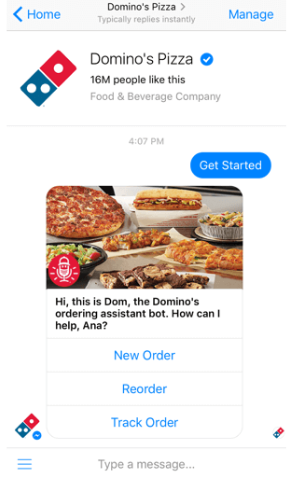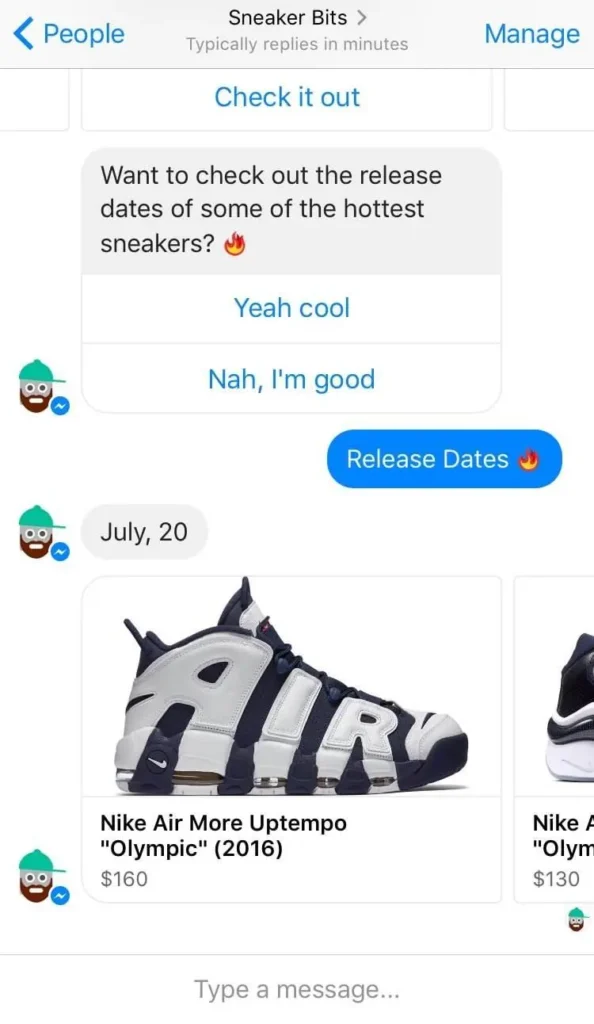Introduction
Conversational marketing is a powerful way to connect with your customers and prospects in real-time. It allows you to provide personalized and responsive experiences that can increase engagement, conversions, and loyalty.
But what exactly is conversational marketing and how can you use it effectively? In this post, we will explain what conversational marketing is, why it matters, and how you can implement it in your business. We will also share 9 examples of conversational marketing that helped businesses grow.
What is conversational marketing?
Conversational marketing is a form of interactive marketing that uses natural language to communicate with customers and prospects. It can be done through various channels, such as chatbots, live chat, SMS, social media messengers, voice assistants, and more.
The goal of conversational marketing is to create a dialogue-driven, personalized, and human-like experience that can help you:
- Understand your customers’ needs and preferences
- Provide relevant and helpful information
- Build trust and rapport
- Guide them through the buyer’s journey
- Encourage them to take action
Conversational marketing can also help you collect valuable feedback and insights that can improve your products, services, and marketing strategies.
Why is conversational marketing important?
Conversational marketing is important because it aligns with the expectations and behaviours of today’s consumers. According to a report by Salesforce, 69% of consumers prefer to use chatbots for quick communication with brands, while 80% of business buyers expect real-time responses from sales reps.
Conversational marketing can also help you stand out from the competition and create a competitive advantage. According to a report by Drift, 82% of consumers consider an immediate response from brands as important or very important when they have questions. However, only 36% of businesses use live chat on their websites.
By using conversational marketing, you can:
- Increase customer satisfaction and retention
- Reduce bounce rates and cart abandonment
- Generate more leads and sales
- Enhance your brand image and reputation
- Save time and resources
How to implement conversational marketing in your business?
To implement conversational marketing in your business, you need to follow some best practices that can ensure a positive and effective outcome. Here are a few pointers to get you started:
1. Choose the right channels
You must choose channels that suit your audience, goals, and resources. For example, to reach a large and diverse audience, you might want to use chatbots on your website or social media platforms. If you want to provide more personalized and in-depth support, you might want to use live chat or SMS.
You also need to consider the integration and automation capabilities of each channel. For example, if you use chatbots, you might want to integrate them with your CRM or email marketing tools to capture leads and follow up with them. If you use live chat or SMS, you might want to automate some responses or workflows to save time and improve efficiency.
2. Define your objectives and metrics
You need to define what you want to achieve with conversational marketing and how you will measure your success. For example, if you’re going to increase conversions, you might want to track metrics such as click-through rates, conversion rates, average order value, etc. If you’re going to improve customer satisfaction, you might want to track metrics such as response time, resolution rate, customer feedback, etc.
You also need to set realistic and specific goals for each channel and campaign. For example, if you use chatbots on your website, you might want to set a goal of increasing conversions by 10% in the next quarter. If you use live chat on your product page, you might want to set a goal of reducing cart abandonment by 15% in the next month.
3. Design your conversations
You need to design your conversations in a way that is engaging, relevant, and helpful for your customers and prospects. You need to consider the following aspects:
Tone:
You need to use a tone that matches your brand personality and voice. You also need to adapt your tone according to the context and mood of the conversation.
For example, if you are dealing with a complaint or issue, you might want to use a more empathetic and apologetic tone. If you are promoting a new offer or feature, you might want to use a more enthusiastic and persuasive tone.
Language:
You must use clear, simple, and easy-to-understand language. You should also avoid using jargon, slang, or abbreviations that may confuse or offend your readers.
For example, if you are targeting a global audience, you might want to use simple and universal terms. If you are targeting a niche audience, you might want to use more specific and relevant terms.
Questions:
You need to use questions that can elicit meaningful and useful responses from your audience. You also need to avoid questions that are too open-ended, too close-ended, or too leading.
For example, if you want to qualify a lead, you might want to ask questions that can reveal their pain points, goals, budget, etc. If you want to close a sale, you might want to ask questions that can overcome objections, create urgency, or trigger emotions.
Answers:
You need to provide answers that can satisfy your audience’s needs and expectations. You also need to avoid answers that are too vague, too long, or too irrelevant.
For example, if you want to provide information, you might want to provide concise and accurate answers with links or resources for further details. If you want to provide solutions, you might want to provide customized and actionable answers with clear steps or instructions.
4. Test and optimize your conversations
You need to test and optimize your conversations to ensure that they are working as intended and delivering the desired results. You need to monitor and analyze your performance data and feedback from your audience. Also, you need to identify and fix any issues or gaps in your conversations.
For example, if you notice that your chatbot is not answering some questions correctly or completely, you might want to update your chatbot’s knowledge base or script. If you notice that your live chat is not generating enough leads or sales, you might want to improve your live chat’s availability or incentives.
9 examples of conversational marketing that boosted business growth
To inspire you with some ideas and best practices for conversational marketing, here are 9 examples of businesses that used conversational marketing successfully:
1. Airbnb
Airbnb is a platform that connects travellers with hosts who offer unique accommodations around the world. It uses conversational marketing to provide personalized recommendations and support for its users.

One of the ways Airbnb does this is by using chatbots on its website and app. The chatbots can help users find the best places to stay based on their preferences, budget, location, etc. The chatbots can also help users book their reservations, manage their trips, and contact their hosts.
Another way Airbnb does this is by using SMS and email to communicate with its users throughout their journey. The SMS and email messages can remind users of their upcoming trips, provide them with useful tips and information, and ask them for feedback after their trips.
By using conversational marketing, Airbnb can enhance its user experience and loyalty. According to Airbnb, its chatbot has increased conversions by 30% and reduced customer service costs by 25%.
2. Sephora
Sephora is a beauty retailer that offers a wide range of products and services for makeup, skincare, haircare, etc. This brand uses conversational marketing to provide personalized advice and recommendations for its customers.

One of the ways Sephora does this is by using chatbots on its website and Facebook Messenger. The chatbots can help customers find the best products for their needs based on their skin type, preferences, goals, etc. The chatbots can also help customers book appointments for in-store services such as makeovers or consultations.
Another way Sephora does this is by using SMS and email to communicate with its customers throughout their journey. The SMS and email messages can remind customers of their appointments, provide them with exclusive offers and discounts, and ask them for feedback after their purchases.
By using conversational marketing, Sephora can increase its customer satisfaction and retention. According to Sephora, its chatbot has increased conversions by 11% and average order value by 6%.
3. Spotify
Spotify is a music streaming service that offers millions of songs, podcasts, playlists, etc. It uses conversational marketing to provide personalized suggestions and experiences for its users.
One of the ways Spotify does this is by using voice assistants on its app and devices such as Google Home or Amazon Echo. The voice assistants can help users discover new music based on their mood, activity, genre, etc. The voice assistants can also help users control their playback, create playlists, share music with friends, etc.
Another way Spotify does this is by using social media messengers such as Facebook Messenger or Twitter DMs. The social media messengers can help users find the best playlists for their needs based on their preferences, occasions, events, etc. The social media messengers can also help users interact with other users who share similar tastes in music.
By using conversational marketing, Spotify can enhance its user engagement and loyalty. According to Spotify, its voice assistant has increased retention by 10% and usage by 15%.
4. Domino’s
Domino’s is a pizza delivery company that offers a variety of pizzas, sides, desserts, etc. The company uses conversational marketing to provide convenient and fun ordering options for its customers.

One of the ways Domino’s does this is by using chatbots on its website and Facebook Messenger. The chatbots can help customers order their favourite pizzas by simply typing or saying “pizza” or using emojis. The chatbots can also help customers track their orders, get coupons, and join the loyalty program.
Another way Domino’s does this is by using voice assistants on its app and devices such as Google Home or Amazon Echo. The voice assistants can help customers order their pizzas by using voice commands or conversational phrases. The voice assistants can also help customers reorder their previous orders, customize their pizzas, and pay with their saved payment methods.
By using conversational marketing, Domino’s can increase its customer convenience and satisfaction. According to [Domino’s], its chatbot has increased orders by 12% and customer retention by 8%.
5. HubSpot
HubSpot is a software company that offers a suite of tools and services for marketing, sales, and customer service. It uses conversational marketing to provide personalized guidance and support for its prospects and customers.

One of the ways HubSpot does this is by using chatbots on its website and app. The chatbots can help prospects and customers find the best solutions for their needs based on their goals, challenges, industry, etc. The chatbots can also help prospects and customers book meetings with sales reps, access resources and tutorials, and get answers to common questions.
Another way HubSpot does this is by using live chat on its website and app. The live chat can help prospects and customers connect with real human experts who can provide more in-depth and tailored assistance. The live chat can also help prospects and customers get feedback, reviews, and testimonials from other users.
By using conversational marketing, HubSpot can increase its lead generation and customer retention. According to [HubSpot], its chatbot has increased leads by 20% and customer satisfaction by 15%.
6. Netflix
Netflix is a streaming service that offers a wide range of movies, shows, documentaries, etc. It uses conversational marketing to provide personalized recommendations and experiences for its users.
One of the ways Netflix does this is by using chatbots on its website and app. The chatbots can help users find the best content for their mood, taste, genre, etc. The chatbots can also help users rate and review the content they watch, get trivia and behind-the-scenes information, and discover hidden gems.
Another way Netflix does this is by using social media messengers such as Facebook Messenger or WhatsApp. The social media messengers can help users interact with their favourite characters or celebrities from the content they watch. The social media messengers can also help users share their opinions and emotions with other users who watch the same content.
By using conversational marketing, Netflix can enhance its user engagement and loyalty. According to Netflix, its chatbot has increased retention by 25% and referrals by 18%.
7. Nike
Nike is a sports brand that offers a range of products and services for athletes and fitness enthusiasts. The brand uses conversational marketing to provide personalized advice and inspiration for its customers.
One of the ways Nike does this is by using chatbots on its website and app. The chatbots can help customers find the best products for their needs based on their preferences, goals, activities, etc. The chatbots can also help customers customize their products, get tips and tricks, and join challenges and communities.

Another way Nike does this is by using SMS and email to communicate with its customers throughout their journey. The SMS and email messages can remind customers of their goals, provide them with motivational quotes and stories, and ask them for feedback after their purchases.
By using conversational marketing, Nike can increase its customer satisfaction and loyalty. According to [Nike], its chatbot has increased conversions by 30% and repeat purchases by 20%.
8. Starbucks
Starbucks is a coffee company that offers a variety of beverages, food items, merchandise, etc. It uses conversational marketing to provide convenient
ordering options for its customers.
One of the ways Starbucks does this is by using voice assistants on its app and devices such as Google Home or Amazon Echo. The voice assistants can help customers order their favourite drinks and food items by using voice commands or conversational phrases. The voice assistants can also help customers pay with their saved payment methods, check their rewards balance, and find nearby stores.
Another way Starbucks does this is by using SMS and email to communicate with its customers throughout their journey. The SMS and email messages can remind customers of their upcoming orders, provide them with exclusive offers and discounts, and ask them for feedback after their purchases.
By using conversational marketing, Starbucks can increase its customer convenience and satisfaction. According to [Starbucks], its voice assistant has increased orders by 15% and customer retention by 10%.
9. Zapier
Zapier is a software company that offers a platform for automating workflows between different apps and services. It uses conversational marketing to provide personalized guidance and support for its users.
One of the ways Zapier does this is by using chatbots on its website and app. The chatbots can help users find the best solutions for their needs based on their goals, challenges, apps, etc. The chatbots can also help users create, test, and manage their workflows, access resources and tutorials, and get answers to common questions.

Another way Zapier does this is by using live chat on its website and app. The live chat can help users connect with real human experts who can provide more in-depth and tailored assistance. The live chat can also help users get feedback, reviews, and testimonials from other users.
By using conversational marketing, Zapier can increase its user satisfaction and retention. According to Zapier, its chatbot has increased conversions by 25% and customer satisfaction by 20%.
Conclusion
Conversational marketing is a powerful way to boost your business by creating a dialogue-driven, personalized, and human-like experience for your customers and prospects. It can help you understand their needs and preferences, provide relevant and helpful information, build trust and rapport, guide them through the buyer’s journey, and encourage them to take action.
To implement conversational marketing in your business, you need to choose the right channels, define your objectives and metrics, design your conversations, and test and optimize your conversations. You can also get inspired by the examples of conversational marketing that helped businesses grow.





